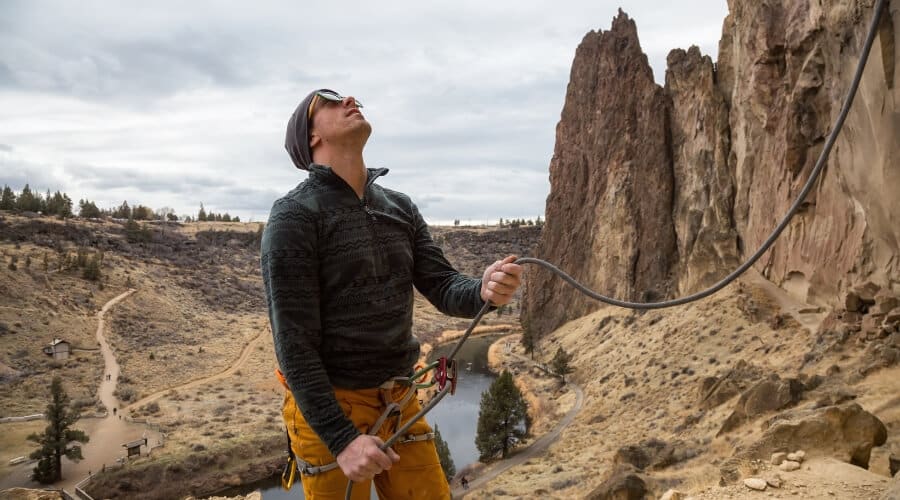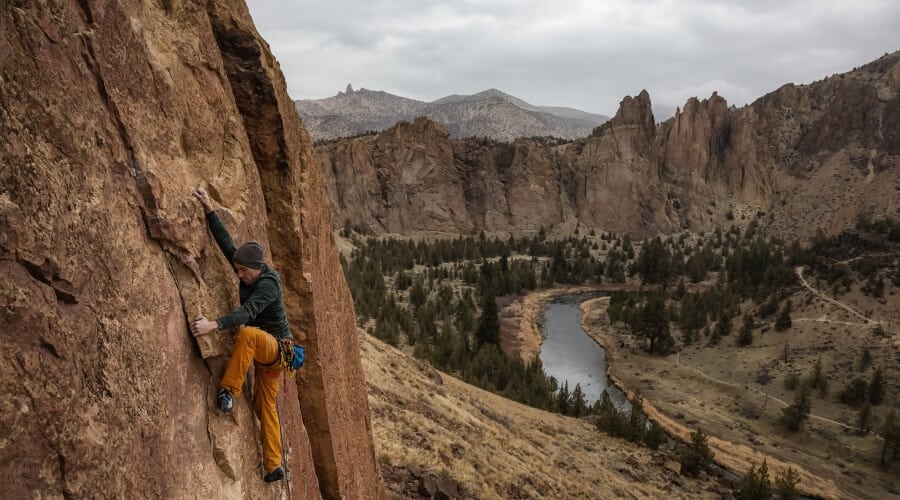Mastering the Basics: Rock Climbing Safety for Beginners

Kostya Garmash
Hello adventurers! I'm Kostya, a passionate rock climber specializing in bouldering and a love for the ocean's waves. I started my climbing journey in Ukraine, where I actively competed in national competitions, bagging several awards. Since moving to Seattle nine years ago, I've been a proud member of the Seattle Bouldering Project. My passion for heights isn't just restricted to boulders. I've scaled majestic peaks like Elbrus, Kazbek, and the challenging terrains of the Bezengi and Caucasus mountains, remembering the proud Mount Rainier. But when I'm not in the mountains, you'll find me riding the Pacific Northwest waves, having immersed myself in surfing since 2015. When the mountains are white, I ski, especially freeriding, with Mount Adams being one of my favorite spots. As the creator of the Rope Jumping team "Extreme Adventures," I've taken the thrill of adventure to another level, jumping off cliffs tethered to a rope. Whether slacklining, hiking or any other outdoor sport, my heart beats for the thrill. Let's embark on an exhilarating journey together!

Introduction:
Rock climbing is a thrilling sport that combines physical strength with mental fortitude. As a beginner, understanding the fundamentals of climbing safety is crucial to enjoy the sport while minimizing the risks. This guide will cover the safety basics, essential gear, and best practices for novice climbers.
Essential Safety Gear for Every Climber
Before even scaling a wall, ensure you have the right gear. To ensure safety while climbing, we provide a complete set of gear, including a certified climbing helmet, a harness, a pair of climbing shoes, and chalk. Additionally, for belayed climbing styles like top-roping, you’ll need a belay device, carabiners, and a dynamic rope designed for climbing.
Understanding Climbing Techniques and Commands
Learning proper climbing techniques not only improves your performance but also ensures your safety. Familiarize yourself with basic climbing moves, holds, and footwork. Equally important is understanding climbing commands — these verbal cues are vital for communication between climbers and belayers.
The Importance of a Reliable Climbing Partner
A dependable climbing partner is your safety net. They should be knowledgeable, attentive, and whom you trust with your life. Make sure your partner knows how to belay correctly and that you both understand each other’s signals and commands without ambiguity.

Choosing the Right Climbing Location for Beginners
Select climbing spots that are suitable for beginners. Look for climbing gyms or outdoor areas with routes that match your skill level. Beginners should start with shorter, less steep routes and gradually work their way up as their skills improve.
Practicing Safety: From Bouldering to Top-Roping
Whether you’re bouldering or top-roping, practicing safety is vital. Use crash pads for bouldering, and always stay within your comfort zone. For top-roping, ensure that the anchor system is secure and that your belayer is always vigilant.
Rock Climbing Etiquette and Environmental Awareness
Respect climbing etiquette by sharing the space with others, not hogging routes, and being mindful of noise levels. Also, practice Leave No Trace principles to minimize your impact on the natural environment.
Taking the Next Step: Advancing Your Climbing Skills Safely
Once you have mastered the basics, you can look into advanced climbing classes and mentorship and gradually challenge yourself with more difficult routes. Always prioritize safety, and never rush your progression.
Conclusion:
Rock climbing is an exhilarating sport that offers a unique blend of challenges and rewards. By mastering the basics of safety, investing in the right gear, and practicing responsible climbing, beginners can safely enjoy the ascent and all the beautiful views of it.



